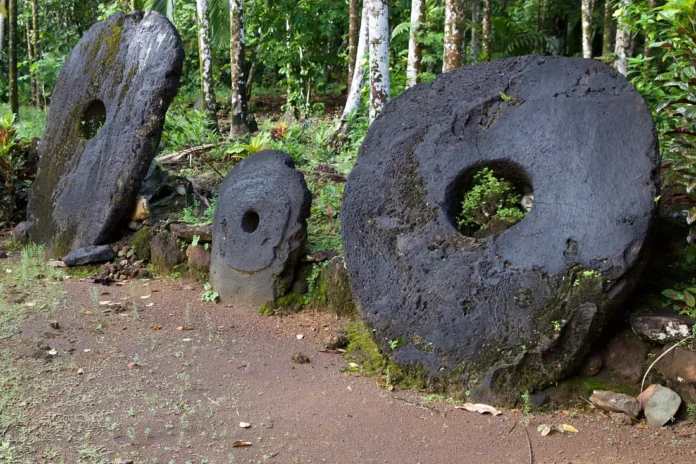The Yap Islands are located in the western Pacific Ocean and are part of the state of Yap within the Federated States of Micronesia. The island state consists of four main islands:
- Yap;
- Gagil-Tamil;
- Maap;
- Rumung; and also 10 very small islets and atolls. The total area of the archipelago is just over 100 square kilometers, most of which belongs to the largest island, Yap. It is on this island that the state capital, the village of Colonia, is located. According to the most recent local census, the population of the islands is 9,000 people.
Paradise Islands
Since the archipelago is situated almost on the equator, the weather and nature resemble those tropical islands shown in chocolate “Bounty” commercials. The islands boast lush tropical vegetation, long beaches of white sand, and a diverse underwater world around coral reefs. Throughout the year, air temperatures range between 25 and 29 degrees Celsius, with the rainy season starting in summer.
The best beaches are on the island of Maap, which serves as Yap’s tourist center. However, the islands do not see many tourists due to their remote location—nearly 500 kilometers from the nearest populated land, the island of Palau. Getting to Yap is quite challenging, as large ships cannot dock in the local ports due to shallow surrounding waters.
The main island has an airport, but regular flights are infrequent. Despite the difficulties, tourism is the backbone of the local economy. The islands are especially attractive to divers, who dive into the warm waters of the Pacific Ocean to observe the rich underwater life near the shores.
History of Yap
The archipelago was discovered by a Spanish expedition led by Captain Saavedra in the early 16th century and remained under Spain’s jurisdiction until the end of the 19th century. Over the past century, the islands changed hands several times before becoming a United Nations Trust Territory under U.S. administration after World War II. It was not until 1986 that Yap became a sovereign state as part of the Federated States of Micronesia, which includes three other independent island states.
Fascinating Currency
Among other tropical islands, the archipelago attracts curious tourists with its unique currency, which was in use on Yap from the 15th century until the early 20th century—extraordinary stone coins called Rai. The stone money consists of round disks with a hole in the center. Their sizes vary from 7 centimeters in diameter to 3.5 meters.
The largest stone disks are nearly half a meter thick and weigh 3-4 tons. These massive stones are rare on Yap and are literally valued more than gold. The origin story of the stone money is fascinating. According to local legend, a brave chief named Anagumang embarked on a long voyage to explore the world.
Upon reaching the island of Palau, the brave sailor was amazed by the beauty of the local stones. These were just limestone, but nothing like them existed on Yap. The chiefs of Palau signed a sort of trade agreement, whereby large stones were exchanged for carved wooden sculptures and reed mats. With great effort, the stone was brought back to Yap. From then on, every expedition was required to return with stone slabs. Sometimes, peaceful trade agreements were made with islanders like those on Palau, and the stones were bartered for various goods.
In other cases, they were fought for in bloody battles. Stones acquired through peaceful means were considered especially valuable. Initially, Anagumang ordered coins to be made in the shape of fish, but this form didn’t last. Later, stone money was crafted in the shape of a crescent, but the ideal form was eventually found—a sun disk.
The hole in the center allowed the massive coin to be carried on a sturdy log, sometimes requiring 20 strong men. Smaller Rai stones were used for everyday transactions, such as buying and selling goods, livestock, or fish. Larger stones were displayed near wealthy homes, serving as a sign of the family’s fortune.
Rai Stones Today
Nowadays, the residents use U.S. dollars for everyday transactions. However, the stone money still holds immense cultural value. Today, it is passed down through generations or transferred during weddings or to settle disputes. Interestingly, ownership of a Rai stone is never documented in writing; a simple verbal agreement in front of witnesses suffices. Due to the age and fragility of these stone treasures, they are no longer moved between homes. But every islander knows who owns which stone.
Today, the stone money is a symbol of the Yap Islands. They appear on local car license plates and postage stamps from this small nation, which are highly prized by collectors around the world. And, of course, every tourist leaves the islands with a souvenir image of the most unique currency on the planet.
